[Anchor Lead]
An emergency relief team departed for
[Pkg]
An emergency relief team composed of 35 including rescue crew members, Korea International Cooperation Agency workers and doctors has departed for
[Soundbite] Kim Yeong-seon (Spokesperson, Min. of Foreign Affairs & Trade) : “The total amount of support will be even more when private financial aid is added.”
The Ministry of Foreign Affairs says some 70 Koreans residing in the area have been confirmed to be safe. But one Korean American on a business trip to
2. Tour Talks
[Anchor Lead]
[Anchor Lead]
Former plans of making
[Pkg]
Business groups Samsung, Hanwha, Woongjin and Lotte and
[Soundbite] Chung Un-chan (Prime Minister) : “Active cooperation from firms and universities is important as well as governmental efforts to improve law and order.”
Investors suggested that the project related laws must first be passed.
[Soundbite] Kim Seung-tae (V. Pres., Samsung Electronics) : “We want the government to quickly carry out the plan. Then we’ll try our best to move in as schedule.”
The MOUs include the government’s plans to realize the revised city plan including land incentives for businesses and plans for investment by firms and universities in each sector. The government says persuading the public is at the top of the list to pass the rectified city plan. It’s hoping that signing the MOUs will help achieve the goal. The government will give a preliminary legislation announcement next week and is aiming to have related laws passed in April.
4. IED Training
[Anchor Lead]
The military is strengthening training against attacks using improvised explosive devices, or IEDs, as more terrorists in the
[Pkg]
This is the frightening power of an improvised explosive device, or IED. The weapon is made of explosives, metal shards and a simple detonator. The number of attacks using these easy-to-make IEDs jumped in
[Soundbite]
“Suspicious object detected.”
A bomb squad is immediately deployed to the scene. A remote-controlled robot approaches the suspected bomb. The bomb is checked with a camera and then carefully disassembled. The entryway to the base is S-shaped and blocked with obstacles to deter car bomb attacks. Outside visitors will be thoroughly checked before they enter the base. The inspection will also cover the undersides of their vehicles.
[Soundbite] Gang Jeong-deok (Lieutenant Colonel, Dongmyeong Unit) : “We’re fully prepared. We’ve gone through strict discipline and have strong teamwork.”
The Korean military will also give extensive IED training to troops set for deployment to
5. Tough Job Market
[Anchor Lead]
Forecasts say employment in both the public and private sectors will decrease this year compared to last. It seems finding a job will still be tough this year despite improving economic conditions. Here’s more.
[Pkg]
GS Engineering and Construction has decided to hire 230 college graduates this year. The number has been doubled compared to last year’s. This is because of the hike of oil refinery plant orders from countries including
[Soundbite] Kim Hye-man (GS E&C) : “We need more workers as we’re getting more orders overseas. We’ll hire more this year, particularly those with experience in the field.”
But besides some construction companies and companies in the financial sector, the number of new job offers for college graduates is expected to drop compared to last year. According to a survey by the Korean Chamber of Commerce, 256 companies out of the country’s top 500, are planning to hire roughly 16,800 new workers. The figure is 5.6% less than the last year’s. Firms in the textile and paper industries are planning to hire more than 33% less than last year. And those in the food and beverage, distribution, electronics, and machinery are to hire up to 14% less. Among the top 30 firms, 14 that have replied to the poll said they were to hire around 6,800 workers this year, to expand the number by 0.9% year-on-year. The government is also planning cut the number of new workers by 680. Public corporations which have to reduce the number of regular staff by up to 13% by 2012 are also hesitating to hire new workers.
6. Tourism Hub
[Anchor Lead]
[Pkg]
People from Southeast Asia look at snow piled high in front of
[Soundbite] Singaporean Travel Agent
These eight people work for the tourism industries of
[Soundbite] O Chang-hyeon (Jeju Tourism Organization) : “As the number of tourists from
Chinese and Japanese have traditionally been the most frequent foreign visitors to Jeju.
But the island’s tourism industry will diversify its tourist base by attracting more visitors from
7. Chilly
[Anchor Lead]
The weather is freezing these days in
[Pkg]
This man came from
[Soundbite] Ssian (Thai Employee) : “1, 2, 3, 4, 5, 6 and 7. 7 layers!”
He says his heart and body thaws at the thought of his family back home.
[Soundbite]
“I send about $700 home and keep about $270 for myself.”
She has lived in
[Soundbite] Virginia (Congolese Employee)
Yen Tan who works as a counselor at a foreign residents’ center stays right next to the stove with her coat on and a blanket. But she says the winter in
[Soundbite] Yen Tan (Vietnamese Worker) : “My friends think
People from warmer countries miss their homes particularly more in the winter season. But at the same time, they’re getting used to
8. Junam Wildcats
[Anchor Lead]
The wildcat has emerged as the king of the jungle following the disappearance of tigers in
[Pkg]
Strong winds blow over a reed field at Junam Reservoir in Changwon under a tense mood. A wildcat appears after a little while. The feline is designated an endangered species by the Environment Ministry. The wildcat’s light steps are no different than those of a field cat, but its fur patterns and sharp eyes are clearly those of the tiger family. A family of three wildcats has been discovered at the reservoir, the first time the cat has been sighted there since 2006. The agile wildcats can listen and read the sound of the wind. They constantly look for prey even while sitting down and resting in a sunny spot. Wildcats are born hunters. They can take down swans, a bird protected by the government and three times its size. Tigers and leopards have disappeared from the Korean ecosystem, making way for wildcats as the new ruler.
[Soundbite] Prof. Yi Su-il (
The wildcats will spend the winter at the reservoir and return deep into the mountains when migratory birds fly off in the spring.
9. Winter Camping
[Anchor Lead]
The continuing cold spell is making some people happier than ever. These folks have fallen in love with winter camping. They say the colder the better. We joined them for a night out.
[Pkg]
The weather is freezing and this camp site is covered with snow. Kids play in the snow while the adults busily set up the tent. Most people try to avoid even venturing outside these days, but this family has come to camp out in the winter cold.
[Soundbite] “We came here to let the kids enjoy the cold weather and make a big snowman.”
“Everything tastes great in nature.”
They melt snow to do the dishes. The whole family cozies up around the camp fire. This intimate atmosphere is the essence of camping in the winter cold.
[Soundbite]
“We keep coming whether it’s cold or hot. It’s really hard to forget the experience.”
Another group of people walk up a snow covered mountain. It’s a slippery path.
[Soundbite] “We’re going to sleep out in the mountains.”
[Soundbite] Jeon Yong-hun (Bivouac Club Member) : “This is a five-star spot. It’s the best spot ever.”
Utensils are a necessity for preparing meals. The frozen stream has to be broken to get water.
[Soundbite] Jo Jae-mun (Bivouac Club Member) : “I’m breaking up the ice to find water. It’s for all of us to drink.”
A tree branch is all you need to make a dining room. The temperature falls even further at night.
[Soundbite] “It’s -8 degrees right now. It’ll fall to -12 to 15 at dawn. It’s perfect for bivouacing.”
Just being out in the elements isn’t enough for some of these folks. Some of them strip down and jump into the icy water. The freezing bath has helped make the chilly weather endurable.
[Soundbite] Kim Mun-seong (Bivouac Club Member) : “It’s very refreshing. I feel great!”
Sleeping bags are spread over a mat to block the chill from the ground. The key here is to leave your face uncovered and out in the open.
[Soundbite] Kim Dong-cheon (Bivouac Club Member) : “Keeping my face out makes me feel closer to nature and the wilderness.”
Winter camping is emerging as another way to enjoy the coldest season the natural way.
■ 제보하기
▷ 카카오톡 : 'KBS제보' 검색, 채널 추가
▷ 전화 : 02-781-1234, 4444
▷ 이메일 : kbs1234@kbs.co.kr
▷ 유튜브, 네이버, 카카오에서도 KBS뉴스를 구독해주세요!
- Aid to Haiti
-
- 입력 2010-01-15 17:31:45
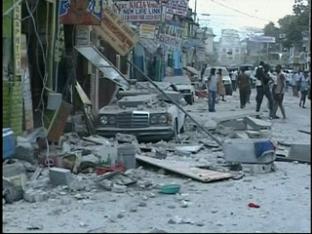
[Anchor Lead]
An emergency relief team departed for
[Pkg]
An emergency relief team composed of 35 including rescue crew members, Korea International Cooperation Agency workers and doctors has departed for
[Soundbite] Kim Yeong-seon (Spokesperson, Min. of Foreign Affairs & Trade) : “The total amount of support will be even more when private financial aid is added.”
The Ministry of Foreign Affairs says some 70 Koreans residing in the area have been confirmed to be safe. But one Korean American on a business trip to
2. Tour Talks
[Anchor Lead]
[Anchor Lead]
Former plans of making
[Pkg]
Business groups Samsung, Hanwha, Woongjin and Lotte and
[Soundbite] Chung Un-chan (Prime Minister) : “Active cooperation from firms and universities is important as well as governmental efforts to improve law and order.”
Investors suggested that the project related laws must first be passed.
[Soundbite] Kim Seung-tae (V. Pres., Samsung Electronics) : “We want the government to quickly carry out the plan. Then we’ll try our best to move in as schedule.”
The MOUs include the government’s plans to realize the revised city plan including land incentives for businesses and plans for investment by firms and universities in each sector. The government says persuading the public is at the top of the list to pass the rectified city plan. It’s hoping that signing the MOUs will help achieve the goal. The government will give a preliminary legislation announcement next week and is aiming to have related laws passed in April.
4. IED Training
[Anchor Lead]
The military is strengthening training against attacks using improvised explosive devices, or IEDs, as more terrorists in the
[Pkg]
This is the frightening power of an improvised explosive device, or IED. The weapon is made of explosives, metal shards and a simple detonator. The number of attacks using these easy-to-make IEDs jumped in
[Soundbite]
“Suspicious object detected.”
A bomb squad is immediately deployed to the scene. A remote-controlled robot approaches the suspected bomb. The bomb is checked with a camera and then carefully disassembled. The entryway to the base is S-shaped and blocked with obstacles to deter car bomb attacks. Outside visitors will be thoroughly checked before they enter the base. The inspection will also cover the undersides of their vehicles.
[Soundbite] Gang Jeong-deok (Lieutenant Colonel, Dongmyeong Unit) : “We’re fully prepared. We’ve gone through strict discipline and have strong teamwork.”
The Korean military will also give extensive IED training to troops set for deployment to
5. Tough Job Market
[Anchor Lead]
Forecasts say employment in both the public and private sectors will decrease this year compared to last. It seems finding a job will still be tough this year despite improving economic conditions. Here’s more.
[Pkg]
GS Engineering and Construction has decided to hire 230 college graduates this year. The number has been doubled compared to last year’s. This is because of the hike of oil refinery plant orders from countries including
[Soundbite] Kim Hye-man (GS E&C) : “We need more workers as we’re getting more orders overseas. We’ll hire more this year, particularly those with experience in the field.”
But besides some construction companies and companies in the financial sector, the number of new job offers for college graduates is expected to drop compared to last year. According to a survey by the Korean Chamber of Commerce, 256 companies out of the country’s top 500, are planning to hire roughly 16,800 new workers. The figure is 5.6% less than the last year’s. Firms in the textile and paper industries are planning to hire more than 33% less than last year. And those in the food and beverage, distribution, electronics, and machinery are to hire up to 14% less. Among the top 30 firms, 14 that have replied to the poll said they were to hire around 6,800 workers this year, to expand the number by 0.9% year-on-year. The government is also planning cut the number of new workers by 680. Public corporations which have to reduce the number of regular staff by up to 13% by 2012 are also hesitating to hire new workers.
6. Tourism Hub
[Anchor Lead]
[Pkg]
People from Southeast Asia look at snow piled high in front of
[Soundbite] Singaporean Travel Agent
These eight people work for the tourism industries of
[Soundbite] O Chang-hyeon (Jeju Tourism Organization) : “As the number of tourists from
Chinese and Japanese have traditionally been the most frequent foreign visitors to Jeju.
But the island’s tourism industry will diversify its tourist base by attracting more visitors from
7. Chilly
[Anchor Lead]
The weather is freezing these days in
[Pkg]
This man came from
[Soundbite] Ssian (Thai Employee) : “1, 2, 3, 4, 5, 6 and 7. 7 layers!”
He says his heart and body thaws at the thought of his family back home.
[Soundbite]
“I send about $700 home and keep about $270 for myself.”
She has lived in
[Soundbite] Virginia (Congolese Employee)
Yen Tan who works as a counselor at a foreign residents’ center stays right next to the stove with her coat on and a blanket. But she says the winter in
[Soundbite] Yen Tan (Vietnamese Worker) : “My friends think
People from warmer countries miss their homes particularly more in the winter season. But at the same time, they’re getting used to
8. Junam Wildcats
[Anchor Lead]
The wildcat has emerged as the king of the jungle following the disappearance of tigers in
[Pkg]
Strong winds blow over a reed field at Junam Reservoir in Changwon under a tense mood. A wildcat appears after a little while. The feline is designated an endangered species by the Environment Ministry. The wildcat’s light steps are no different than those of a field cat, but its fur patterns and sharp eyes are clearly those of the tiger family. A family of three wildcats has been discovered at the reservoir, the first time the cat has been sighted there since 2006. The agile wildcats can listen and read the sound of the wind. They constantly look for prey even while sitting down and resting in a sunny spot. Wildcats are born hunters. They can take down swans, a bird protected by the government and three times its size. Tigers and leopards have disappeared from the Korean ecosystem, making way for wildcats as the new ruler.
[Soundbite] Prof. Yi Su-il (
The wildcats will spend the winter at the reservoir and return deep into the mountains when migratory birds fly off in the spring.
9. Winter Camping
[Anchor Lead]
The continuing cold spell is making some people happier than ever. These folks have fallen in love with winter camping. They say the colder the better. We joined them for a night out.
[Pkg]
The weather is freezing and this camp site is covered with snow. Kids play in the snow while the adults busily set up the tent. Most people try to avoid even venturing outside these days, but this family has come to camp out in the winter cold.
[Soundbite] “We came here to let the kids enjoy the cold weather and make a big snowman.”
“Everything tastes great in nature.”
They melt snow to do the dishes. The whole family cozies up around the camp fire. This intimate atmosphere is the essence of camping in the winter cold.
[Soundbite]
“We keep coming whether it’s cold or hot. It’s really hard to forget the experience.”
Another group of people walk up a snow covered mountain. It’s a slippery path.
[Soundbite] “We’re going to sleep out in the mountains.”
[Soundbite] Jeon Yong-hun (Bivouac Club Member) : “This is a five-star spot. It’s the best spot ever.”
Utensils are a necessity for preparing meals. The frozen stream has to be broken to get water.
[Soundbite] Jo Jae-mun (Bivouac Club Member) : “I’m breaking up the ice to find water. It’s for all of us to drink.”
A tree branch is all you need to make a dining room. The temperature falls even further at night.
[Soundbite] “It’s -8 degrees right now. It’ll fall to -12 to 15 at dawn. It’s perfect for bivouacing.”
Just being out in the elements isn’t enough for some of these folks. Some of them strip down and jump into the icy water. The freezing bath has helped make the chilly weather endurable.
[Soundbite] Kim Mun-seong (Bivouac Club Member) : “It’s very refreshing. I feel great!”
Sleeping bags are spread over a mat to block the chill from the ground. The key here is to leave your face uncovered and out in the open.
[Soundbite] Kim Dong-cheon (Bivouac Club Member) : “Keeping my face out makes me feel closer to nature and the wilderness.”
Winter camping is emerging as another way to enjoy the coldest season the natural way.
이 기사가 좋으셨다면
-
좋아요
0
-
응원해요
0
-
후속 원해요
0










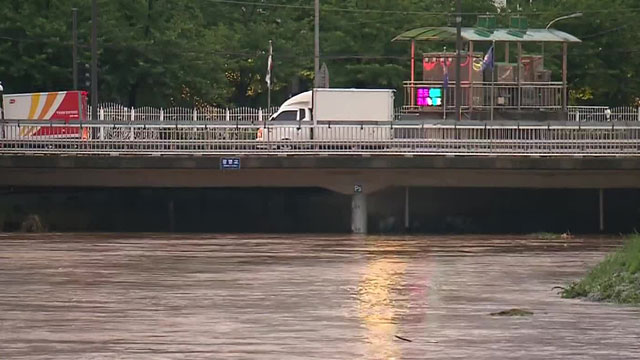
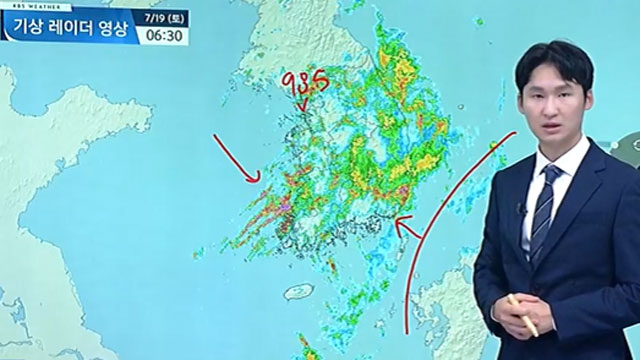
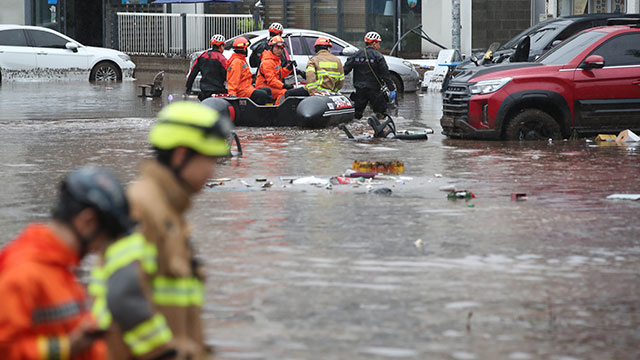
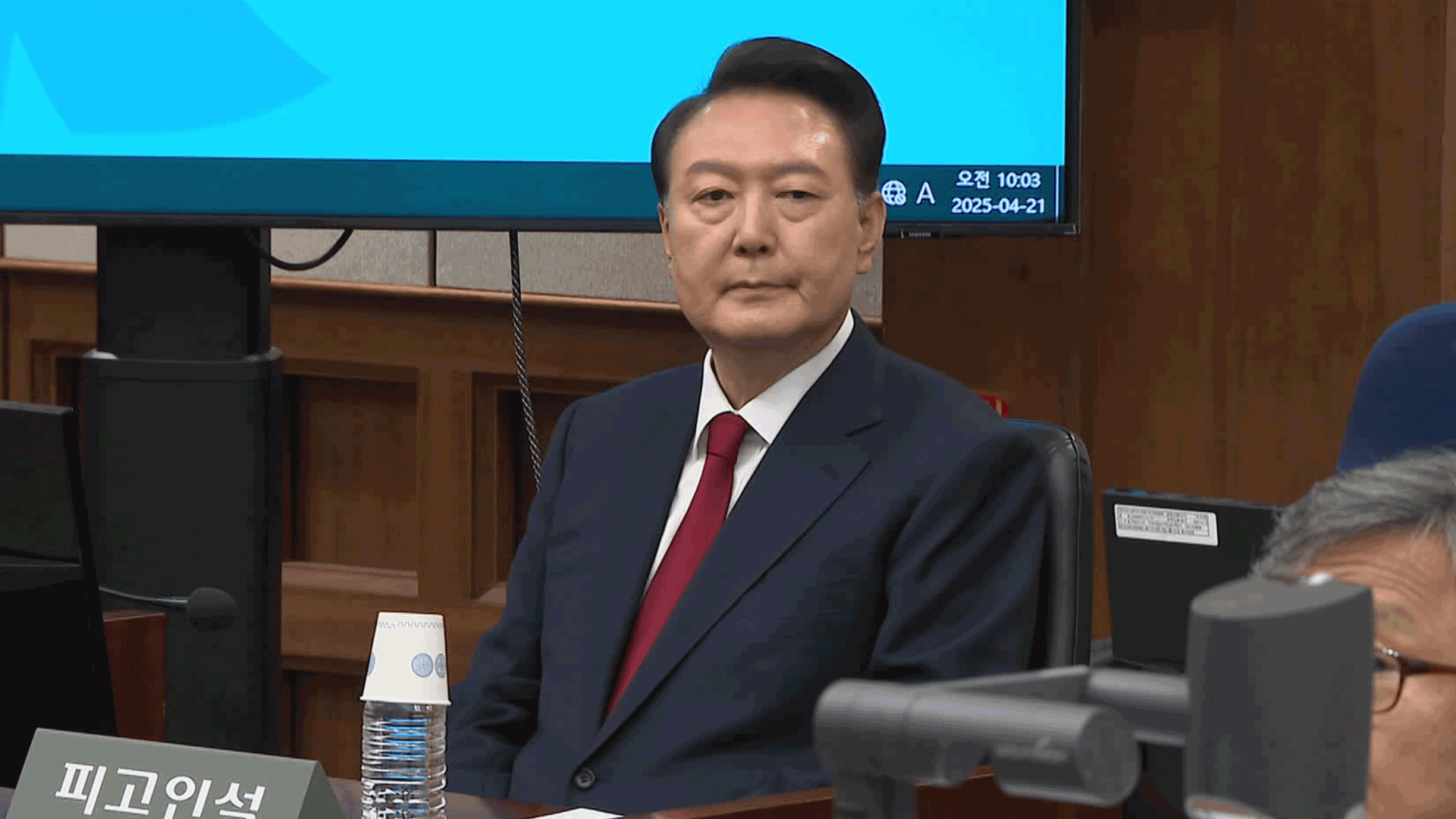

이 기사에 대한 의견을 남겨주세요.